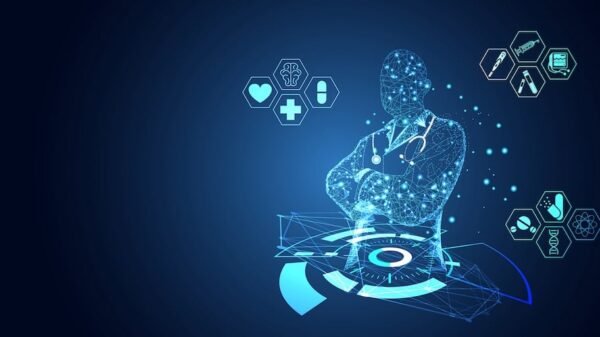Introducing Digital Twins in Healthcare
The concept of digital twins, once exclusive to engineering and aerospace industries, is now making transformative inroads into healthcare. A digital twin in medicine is a highly detailed, virtual replica of a patient, created using real-time data and sophisticated simulations. This technology enables clinicians to visualize, predict, and optimize treatment strategies tailored to the unique physiological makeup of each individual.
How Digital Twins Are Created
Building a digital twin involves collecting comprehensive data from the patient, including genetic information, medical imaging, lifestyle data, and real-time biometrics from wearable devices. Advanced machine learning models then integrate and analyze this information to construct a dynamic, evolving digital model. This digital version mirrors the patient’s physical state and responds virtually to potential treatments and interventions.
Simulating and Predicting Health Outcomes
One of the most promising applications of digital twins is the ability to simulate different clinical scenarios and predict health outcomes. By running simulations, doctors can forecast how a patient might respond to a variety of treatments before actually administering them. This predictive capability allows for safer, more effective treatment decisions, reducing the risk of adverse events and unnecessary interventions.
Personalized Treatment Plans Based on Real-Time Data
Digital twins empower healthcare providers to craft truly personalized treatment plans. Rather than relying solely on generalized clinical guidelines, physicians can tailor therapies to the individual’s current condition and projected response. Whether it’s determining the optimal chemotherapy dosage or fine-tuning a rehabilitation program, digital twins provide a precision-guided approach to patient care.
Proactive and Preventive Care Strategies
Beyond treatment, digital twins offer a proactive tool for preventing disease. By continuously monitoring virtual models, clinicians can detect early signs of deterioration or disease onset well before symptoms manifest. This allows for early interventions, lifestyle modifications, or preventive treatments that could significantly improve long-term health outcomes and reduce healthcare costs.
Revolutionizing Chronic Disease Management
Patients with chronic conditions such as diabetes, heart disease, or COPD stand to benefit immensely from digital twin technology. A digital twin can monitor disease progression, anticipate exacerbations, and recommend real-time adjustments to treatment plans. This dynamic management strategy ensures that care remains responsive to the patient’s evolving needs, enhancing quality of life and reducing hospitalizations.
Enhancing Surgical Planning and Outcomes
Surgeons are also leveraging digital twins to improve preoperative planning and surgical precision. Virtual models allow for detailed exploration of anatomical structures and simulate surgical approaches. By rehearsing operations on a digital replica, surgeons can minimize risks, optimize techniques, and improve postoperative outcomes, particularly in complex or high-risk procedures.
Integrating Artificial Intelligence for Greater Accuracy
Artificial intelligence plays a crucial role in enhancing the accuracy and adaptability of digital twins. Machine learning algorithms continuously refine the virtual model by analyzing new patient data, identifying patterns, and predicting changes. This constant evolution ensures that digital twins remain up-to-date and reflective of the patient’s real-world health status.
Challenges in Adoption and Implementation
Despite its promise, the adoption of digital twin technology faces several challenges. Building accurate and reliable models requires high-quality, comprehensive data, which is not always readily available. Interoperability between health data systems, ethical considerations around data use, and the significant investment required for technology infrastructure also pose hurdles to widespread implementation.
Addressing Privacy and Security Concerns
Given the sensitive nature of the data involved, privacy and security are paramount in the deployment of digital twins. Developers and healthcare providers must implement robust encryption, access controls, and compliance with regulations like HIPAA and GDPR. Ensuring patient trust through transparent data policies and stringent cybersecurity measures is essential for broader acceptance.
Collaboration Across Disciplines
The success of digital twins in healthcare relies on collaboration between clinicians, data scientists, engineers, and ethicists. Multidisciplinary teams are essential for building sophisticated models that accurately represent the complexities of human biology. This collaboration fosters innovation and ensures that digital twin applications are both scientifically robust and clinically meaningful.
Current Real-World Applications and Research
Several pioneering projects are already demonstrating the potential of digital twins. In cardiology, researchers are creating heart-specific twins to predict responses to stent placements and valve surgeries. In oncology, virtual tumor models are being used to simulate how cancers respond to different chemotherapy regimens. These early successes hint at the broad applicability of digital twins across medical disciplines.
Future Prospects: A Personalized Healthcare Ecosystem
As technology matures, digital twins are expected to integrate seamlessly with broader healthcare ecosystems. Combined with advances in genomics, wearable tech, and AI diagnostics, digital twins could one day form the backbone of truly personalized medicine—where treatment, prevention, and wellness strategies are uniquely crafted for every individual.
Benefits for Healthcare Systems and Cost Savings
Digital twin technology offers potential cost savings for healthcare systems by reducing unnecessary treatments, hospitalizations, and complications. By enabling early interventions and more effective management of chronic diseases, it also helps decrease the long-term financial burden on both providers and patients, making healthcare more sustainable and equitable.
Conclusion: Toward a Smarter, More Personalized Future
Digital twins represent a monumental leap forward in the personalization of healthcare. By simulating real-world outcomes and guiding tailored interventions, they promise to transform not only individual patient journeys but also the broader delivery of healthcare services. As adoption grows and technology advances, digital twins are set to become indispensable tools in building a smarter, safer, and more human-centered healthcare future.



































